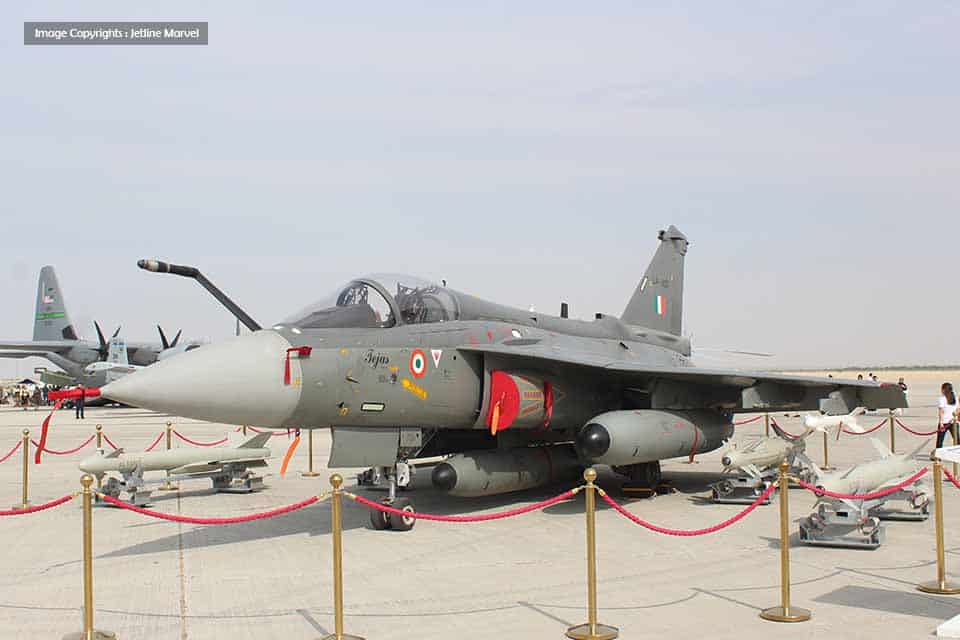Defence
GE Unveils New Tejas Engine Delivery Schedule After Defense Minister Raises Delay Concerns

In response to recent concerns raised by Indian Defence Minister Rajnath Singh, American engine manufacturer General Electric (GE) has announced a revised delivery schedule for the F404-IN20 engines intended for India’s Tejas Mk1A aircraft.
According to thr Report from The Print, This new schedule, set to commence in November this year, aims to address significant delays in engine deliveries that have impacted the Tejas program.
British Airways Expands North American Flights For Summer 2025
The Indian Air Force (IAF) has ambitious plans to induct approximately 300 Tejas fighters over the next 15 years. This requires a substantial ramp-up in production by Hindustan Aeronautics Limited (HAL), the defense public sector undertaking responsible for assembling the aircraft. To meet these goals, HAL must align its production capacity with the IAF’s requirements.
Air Chief Marshal V. R. Chaudhari emphasized the need for diversification in production lines and suggested more public-private partnerships or joint ventures to manage multiple weaponry and production lines effectively.
Initially, the IAF placed an order for 83 tejas mk1a generation jets, valued at around Rs 48,000 crore. Following this, the government decided to increase the order by an additional 97 aircraft. However, production delays—primarily due to the late delivery of F-404 engines from GE—have caused the program to lag by over 10 months.
Lockheed and Tata Team Up to Build C-130J MRO Facility in India
Sources indicate that GE has committed to delivering two engines per month starting from November, aiming to fulfill the full order of 99 engines. This adjustment follows a contract signed in August 2021, which stipulated that GE should deliver 99 engines beginning March this year. The delay in tejas mk1a delivery has been a significant concern, tejas mk2 vs f16 as no engines have been received yet.
The IAF’s plans also include ordering an additional 97 tejas aircraft to bolster its fleet further. Under the terms of the original contract, GE was expected to deliver engines in tandem with HAL’s aircraft production rate of 16 per financial year. The revised schedule from GE is a crucial step towards addressing the delays and ensuring the timely delivery of engines to support the Tejas program’s progress.

Defence
Russia’s NV.17 Hybrid Helicopter Aims to Balance Light and Heavy Helicopter Needs

As Western sanctions continue to impact Russia’s aviation sector, the country is making significant strides in advancing its domestic aerospace capabilities.
Despite the ongoing challenges, Russia has unveiled the Heliburo HB.17, a cutting-edge hybrid-powered medium-class helicopter that promises to reshape both commercial and military aviation.
The helicopter is currently in the technical design phase, with plans for its first flight slated for 2027. This marks a major step forward in Russia’s efforts to modernize its aviation fleet and reduce reliance on foreign technology.
This country tops visa rejections in the popular Schengen countries
The HB.17 is designed as a versatile, multi-role aircraft, capable of performing a wide range of functions. It is built to handle cargo transport, passenger carriage, reconnaissance, and close air support missions. With its robust design and flexible capabilities, the HB.17 is expected to meet the needs of both military and commercial operators, offering a solution for missions requiring a greater capacity than light helicopters but avoiding the limitations of larger aircraft.
One of the most innovative features of the HB.17 is its hybrid power plant. This combination of conventional and electric technologies enhances fuel efficiency, allowing the helicopter to stay airborne for up to seven hours without needing to refuel.
This extended operational endurance makes the HB.17 particularly well-suited for long-duration missions, providing a significant advantage over traditional helicopters. Additionally, the HB.17 will be equipped with modern avionics, ensuring advanced navigation, communication, and operational capabilities.
Qatar Airways Cargo and MASkargo Launch New Strategic Partnership
The HB.17 is positioned to compete with other medium-class helicopters such as the Kamov Ka-60/62 and the Mil Mi-38. However, its hybrid powerplant and modern avionics set it apart, offering a more efficient and technologically advanced alternative.
Its multi-role versatility, combined with its fuel efficiency and cutting-edge systems, gives it a competitive edge in the evolving aviation landscape. The introduction of the HB.17 follows recent reports of Russia receiving a new batch of armored vehicles from the UAE-based Streit Group.
Russia has traditionally focused on producing helicopters for defense purposes, but this time, it appears to be venturing into the civilian helicopter market with the HB.17.
This, along with the ongoing development of the HB.17, reflects Russia’s continued efforts to modernize its military assets and increase its self-reliance, even as sanctions continue to pressure its defense and aerospace sectors.
As Russia faces mounting geopolitical challenges, the HB.17 stands as a symbol of resilience, technological innovation, and determination to maintain its military and aviation capabilities.
-

 Aviation2 months ago
Aviation2 months agoMicrosoft Flight Simulator Raises $3 Million to Bring Back the An-225 Mriya
-

 Airlines2 months ago
Airlines2 months agoQatar Citizens Can Travel to the United States Without a Visa
-

 Aviation2 months ago
Aviation2 months agoQatar Airways bans these new Electronic Devices on plane
-

 Airlines2 months ago
Airlines2 months agoJapan Airlines Rolls Out Free Domestic Flights to International Passengers
-

 Defence2 months ago
Defence2 months agoWhich Country Has the Largest Fleet of Fighter Aircraft?
-

 Airport2 months ago
Airport2 months agoWestern Sydney Airport Welcomes Its First Plane After 6 Years of construction
-

 Travel2 months ago
Travel2 months agoQatar Airways Launches Four Additional Flights from Amsterdam
-

 Aviation2 months ago
Aviation2 months agoDid you know ? Once Boeing 747 carried 1088 passenger in 1991








